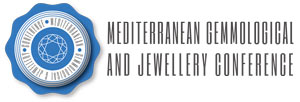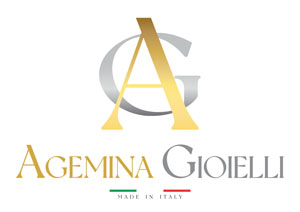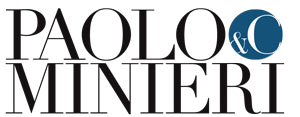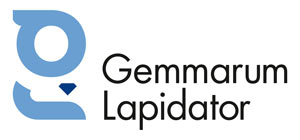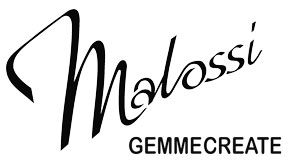Let us go back to the genetic environment, if you want to (repetita iuvant):
- Relate the shape, colour, transparence (if any), position and orientation of the inclusion(s) present in the analysed stone, as well as its/their association(s) with other inclusion(s), their global overall appearance and all the elements that prove to be relevant for diagnostic purposes;
- Trace back from these peculiarities the natural or artificial process, based on the case, which gave origin to their formation and, as a translation, that of Natural, Synthetic or Artificial Substances hosting them. With the exception of “induced” inclusions resulting from a Treatment (for example residues in Healing Fractures in Heat-Treatments of Rubies and Sapphires, Filling/Stopping of fissures/ and/or cavities in the same stones as well as in Emeralds) of a natural gem, the equivalence “formation process = types of inclusions = nature of the hosting substance = origin (natural, synthetic or artificial) of the substance, fits perfectly.
- Come to a reliable diagnostic finding meant to define the nature or the origin (natural or synthetic and not geographical) of the material being analysed.



In this opening phase we should ask ourselves what these genetic environments could be. “Elementary, Watson”. From what mentioned above:
1. Natural environment for natural substances. The expression natural environment indicates: the Lithosphere of Planet Earth, that is its outer solid involucre, 70-113-km thick, also called the Earth’s Crust. Such an involucre is composed by 95% of Igneous or Magmatic rocks and by 5% of Metamorhic and Sedimentary ones with a prevalence of silicon (Si) and aluminium (Al) minerals, hence the name of SiAl. The involucre formed following a cooling process of a mass which was mainly in its gaseous state, then liquid and finally solid (in the crust part) where, in 4.5 billion years, all those unrepeatable natural geological processes that generated minerals, rocks, gems and therefore also inclusions took place. We should always keep in mind that, if inclusions are solid, they are to be considered as minerals. Minerals/crystals included in other minerals/crystals (gems) that formed, in almost all cases, either before or simultaneously to the hosting mineral/crystal (in another more suitable occasion we will analyse the topic “Crystallisation phases in the Magmatic Process and Classification of Inclusions based on the formation period when compared to the formation period of the hosting crystal”). And here is the rub, the revealing secret: if I recognise in the mineral/crystal/inclusion something that originated in the natural genetic process, isn’t the hosting material itself the result of a genetic natural process? A logical, consistent and ineludible deduction. And what can make me understand that the mineral/crystal/inclusion has a natural origin? The peculiarities presented at the above point A. In this regard I will never refrain from emphasising the concept of “association” and “global appearance” of our friends the inclusions. In fact, keeping in mind that a mineral (crystal) very rarely grows, in the same genetic environment, at the same conditions of temperature and pressure, in utter solitude, but with other minerals/crystals of the same or even different species, I will have at my disposal another reading key of the rub: namely the association and the global appearance. Later on I will provide you with a practical mandatory example of the conjunction “appearance, genetic-environmental concordance, association, overall appearance, etc.” which is represented by inclusions of Calcite (Figure 1), Dolomite, Parisite, Albite (Figure 2), Quartz (Figure 3), Pyrite crystals (Figure 1), as well Bi-phase or Three-phase inclusions in a Beryl of the emerald variety (Figures 4-5). At the same time I will supply a “mug shot” of such inclusions so as to allow you to identify their distinctive features. However, I must honestly confess: minerals/crystals/inclusions not always show those external features (crystallographic shapes) that are the expression of their own internal crystal structure. They may have undergone a corruption, a morphologic alteration, especially due to a “reworking” of a metamorphic process. In such a case the identity could be traced back from their colour and proximity to other minerals they are generically associated to and whose shape can be established. In a separated Glossary I will provide you with the reading keys of the various technical terms, as not everyone is familiar with them – not always even the gemmologist – belonging to a specific language pertaining to such disciplines as mineralogy and geology. And, after all, no alternative or substitutive terminology exists, unless we resort to expressions that would be even more obscure and harder to interpret than the terms themselves.


2. Laboratory artificial environment for synthetic and artificial substances.
Meaning, with the expression laboratory artificial environment:
- “Verneuil” furnace for the synthesis from “Flame Fusion” or “Verneuil” method (Figures 6-7), after the name of its inventor, the French chemist August Verneuil that, in 1896, patented it to create the Synthetic Ruby Corundum. Today this method allows for the production of: Corundums of any colour, Asteriated Corundums, Synthetic Spinel. Once: “Fabulite” or Strontium Titanate and Synthetic Rutile, diamond imitations fashionable between 1955s-1980s.
- Crucible, for the manufacturing with the “Flux Melting Method” of synthetic Emeralds, Rubies, Sapphires, Alexandrites, YAG (Yttrium Aluminium Garnet), another diamond imitation very popular from 1965 to 1990s) and other garnets.
- Crucible, for YAG and GGG (Gallium Gadolinium Garnet), diamond imitation present on the market in the roaring ‘70s and 80s) with the “Czochralsky” drawing process.
- Crucible, used for the “Zone Melting”, “Bridgman-Stockbarger”, “Cold Crucible” or “Induction Skull” methods.
- Autoclave (Figure 8), very popular today or the synthesis of Quartz, Emerald, Ruby, Sapphire and Aquamarine with the “Hydrothermal Method”.
- Container for liquid solutions, to prepare Opals with the “Chemical Precipitation Method”.



Also here, as a syllogism, the above mentioned rule concerning natural substance is valid: if the inclusions present in the material being examined show some features recognising environment and artificial manufacturing method (synthesis) as pertaining characteristics, isn’t also the hosting material the result of an artificial or synthesis genetic process? An equally logical and obvious deduction. Some examples? Bubbles and curved bands in Synthetic “Verneuil”. Residues of flux in the Synthetic elements from “Flux Melting”. Bi-phase inclusion, “tyre tread” growth configuration in Hydrothermal Synthetic elements. Just to quote the most striking.


Article by Luigi Costantini* and Claudio Russo**, published on IGR – Rivista Italiana di Gemmologia #3, January 2018.
* Prof. Luigi Costantini estabilished IGI International Gemological Institute School of Gemology in Italy in 1998. He is currently honorary president of IGI International Gemological Institute Italy.
** Dr. Claudio Russo, geologist, is a teacher and a researcher for IGI International Gemological Institute since more than twenty years.





